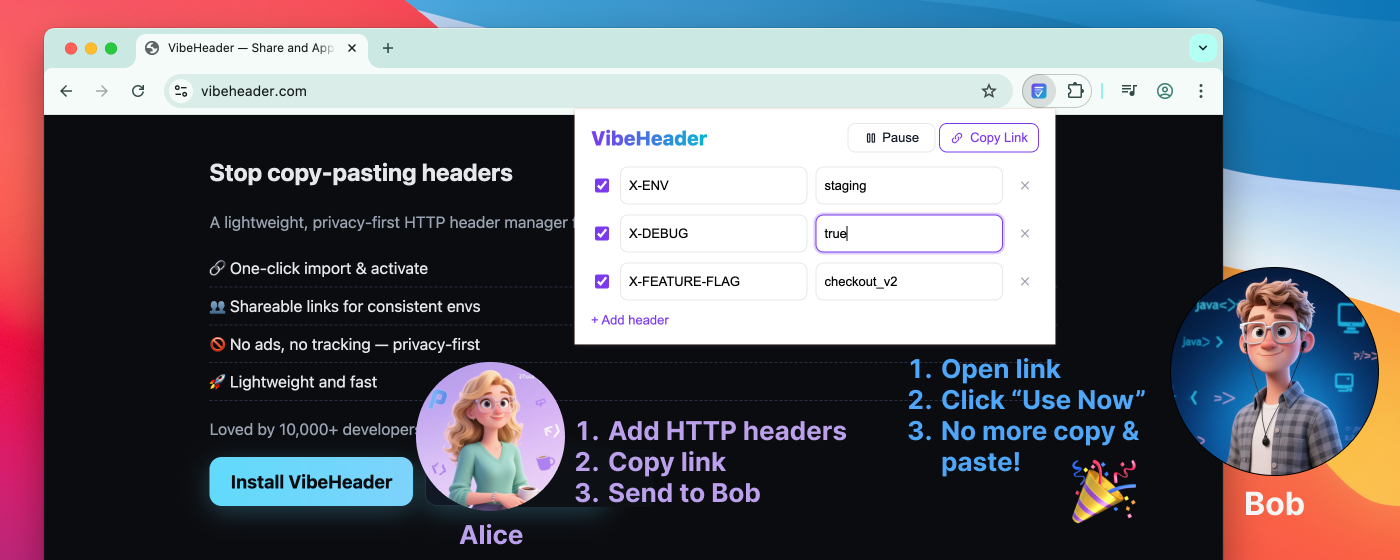ModHeader
Popular and long‑standing header editor. Broad usage across dev teams. Some users report ads or telemetry; the UI can feel heavier for simple header tweaks.
See also: VibeHeader as a ModHeader alternative · ModHeader privacy · Injected ads
A practical comparison of popular header tools — where they fit, and when a focused, ad‑free editor is better.

| Dimension | VibeHeader | ModHeader | Requestly | Header Editor |
|---|---|---|---|---|
| Primary focus | 🎯 Headers + sharing workflows | Headers only | 🔧 Headers + redirects + mocks + scripts | Headers + general rules |
| Ads / tracking | ✅ Zero ads, zero tracking | ❌ Users report ads | ⚠️ Check vendor policy | ⚠️ Check vendor policy |
| Sharing | 🔗 One-click URL fragment | 📁 File export/import | 👥 Workspace/shared rules | 📁 Import/export files |
| MV3 ready | ✅ Native MV3 | ✅ Supported | ✅ Supported | ⚠️ Varies by version |
| Best for | ⚡ Fast, privacy‑first workflows | 🔄 General header editing | 🛠️ Complex multi‑rule setups | 🎛️ Power‑user configurations |
/s, then import with a single click.Popular and long‑standing header editor. Broad usage across dev teams. Some users report ads or telemetry; the UI can feel heavier for simple header tweaks.
See also: VibeHeader as a ModHeader alternative · ModHeader privacy · Injected ads
Full‑featured rules platform (headers, redirects, mocks, scripts). Great for complex flows, but heavier if you only need request header changes.
Flexible rules for headers plus redirect/cancel. Useful for power users; less specialized for quick header‑only edits.
Capture and rewrite traffic across apps and devices, not just in the browser. Ideal for QA and cross‑app debugging; more setup and usually paid.
Share links encode headers in the URL. Paste them into docs or copy the JSON directly.
No. Everything stays in your browser. Sensitive keys are automatically masked.
Use per‑site scopes to keep rules local and avoid header leakage.
For complex needs, try Requestly or desktop proxies. For headers only, VibeHeader is simpler.
Share only with trusted teammates, avoid long-lived secrets, rotate values periodically.